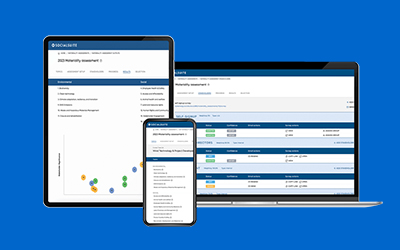Socialsuite Materiality Assessment Software
(Tech Solution)
Socialsuite offers simple and affordable materiality software. Our software features single and/or double materiality, customizable stakeholders and topics, along with automated analysis.
Cost:
Socialsuite licenses the software to consultants.
Highlights:
- There’s a lot of confusion around how to start your ESG journey because of constant changes in the regulation and framework landscape.
- A materiality assessment provides qualitative and quantitative data, thus enabling data-driven decision-making.
- Identifies a company’s most relevant sustainability topics to be used in a sustainability roadmap.
- Builds trust and credibility with stakeholders because of their engagement and wide range of perspectives.
Contact Socialsuite
Kate Smith
kate@socialsuitehq.com


